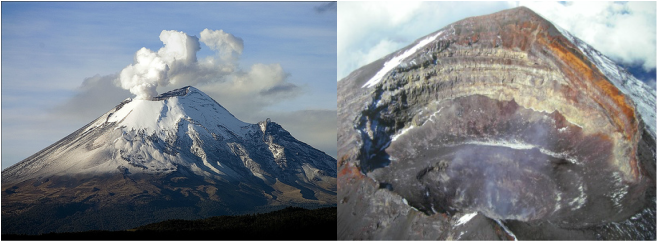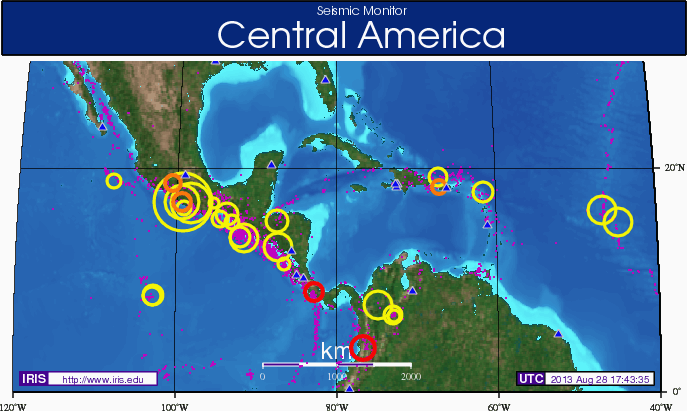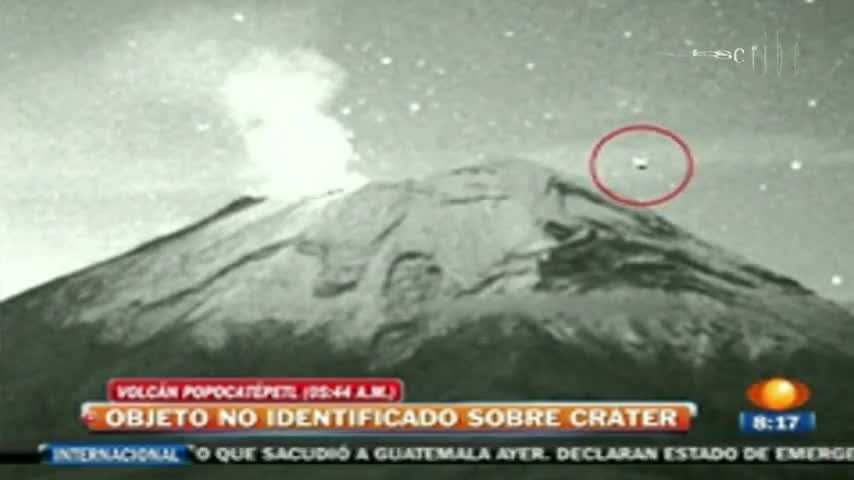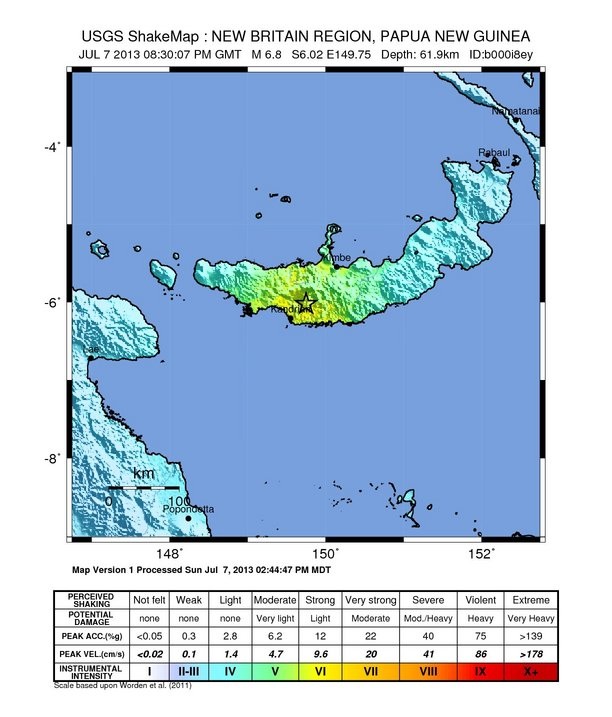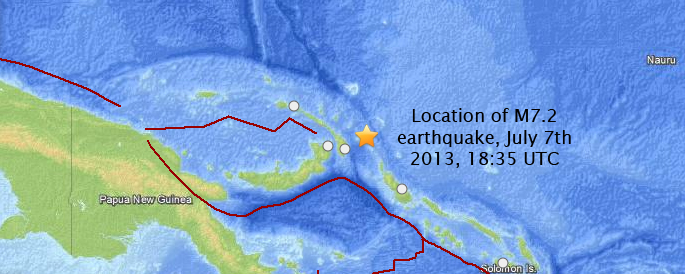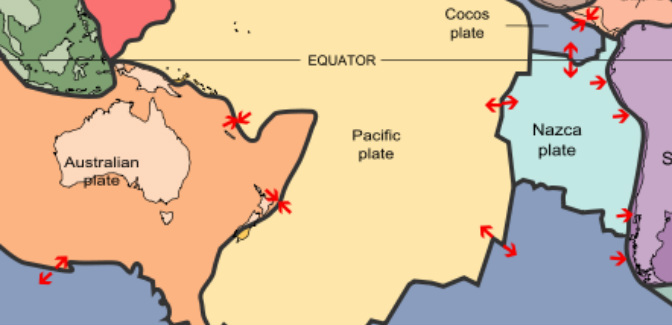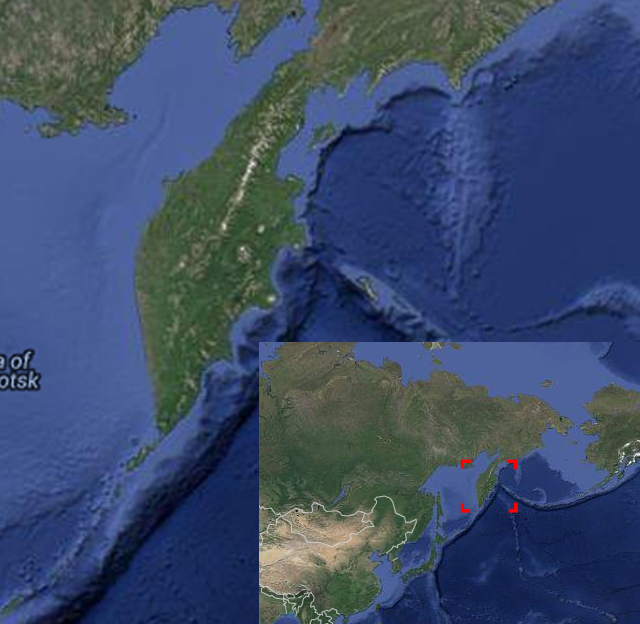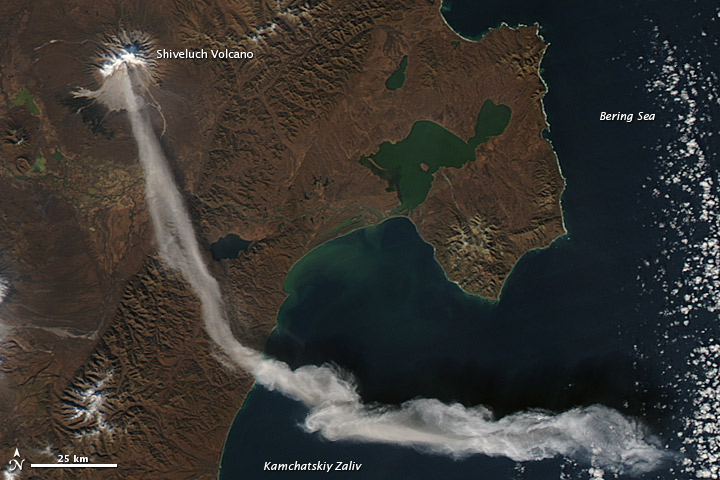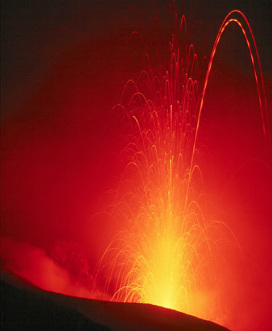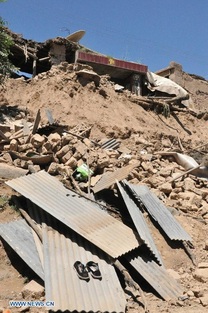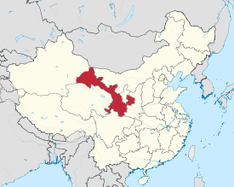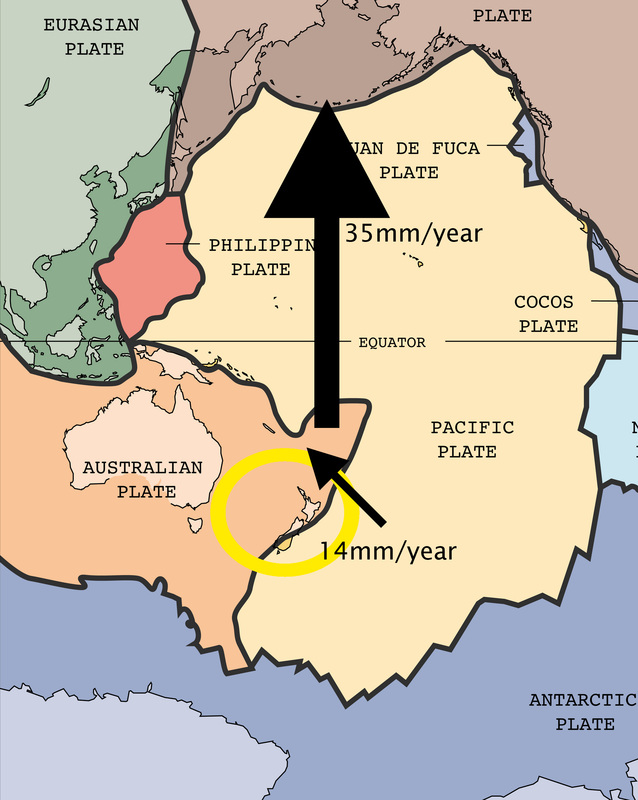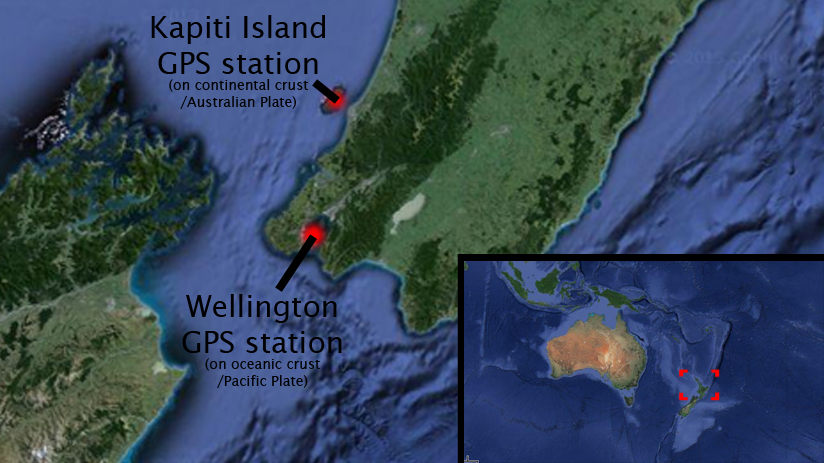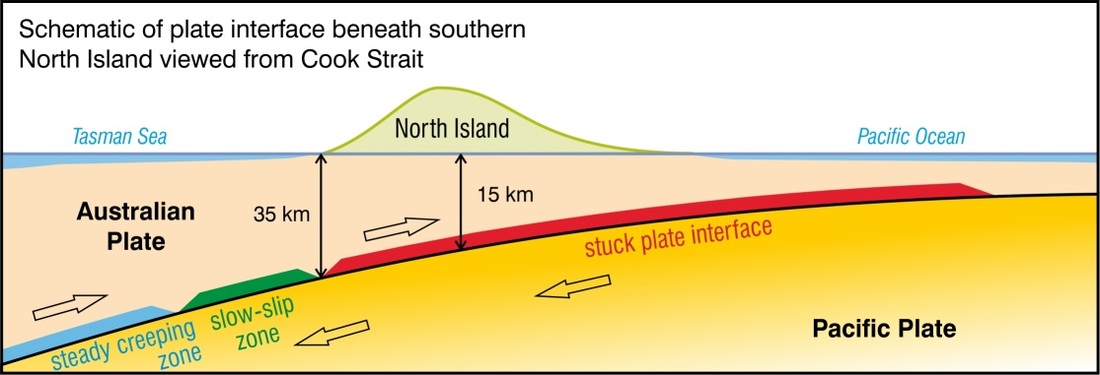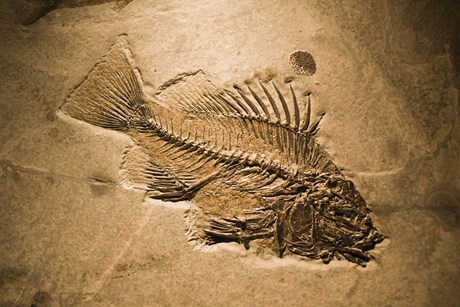The volcano sits on the east end of the Trans-Mexican volcanic belt, an area of volcanic activity due to the subduction of the Cocos micro-plate being subducted beneath the North American plate at a rate of roughly 1.4 cm/year.
The volcano has formed as result of laying down of layers of volcanic material such as lava (molten rock), tephra (fragmented rock pieces), pumice (low density, lightly coloured volcanic rock) and volcanic ash over the volcano's estimated 730,000 lifetime. These layers, or strata, truly make the structure a composite one and build up to create the distinctive steep-sided conical form posessed by stratovolcanoes. Lava flows are relatively viscous due to a high silica content, hence flowing short enough distances down the volcano as to progressively increase its gradient.
Below left: Side on view of the volcano, displaying steep sides.
Below right: View into the volcano's crater, displaying clearly it's more recent strata.
Though the volcano is unlikely to affect any settlements via its lava flows, which are too viscous to flow far (though 15 km flows have been recorded of other stratovolcanoes), or indeed it's lava bombs which are only possible of projection amounting to ~800 m laterally, the ash expelled into the atmosphere from eruptions has caused some minor disruption. There are several medium-sized settlements within 20 km of the volcano, such as Atlautla (17 km W), and Ecatzingo (15 km SW), that have experienced ashfall. The farthest reaching ash clouds have reached Cuernavaca, 65 km WSW of the volcano itself.
Earthquakes are a concern too, though recently Popocatépetl's seismic activity has only reached magnitudes of around 4.5 on the richter scale.
Below: Wegener's original publication describing continental drift; perfectally relevent.
References:
Popocatépetl background:
http://www.volcanodiscovery.com/popocatepetl.html
http://en.wikipedia.org/wiki/Popocat%C3%A9petl#Eruptions
Scientific background:
http://en.wikipedia.org/wiki/Stratovolcano
http://en.wikipedia.org/wiki/Strombolian_eruption
http://www.tectonics.caltech.edu/outreach/highlights/mase/ (interesting explanation of the mexican subduction zone)
Resources:
http://ofgs.aori.u-tokyo.ac.jp/~okino/platecalc_new.html (Relative plate velocity calculator)
Activity updates:
http://www.volcanodiscovery.com/popocatepetl/news.html
http://www.volcano.si.edu/weekly_report.cfm#vn_341090
Tom Ruddell, 28/8/13
